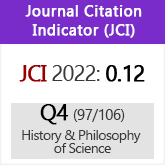The combustible mirror of Buffon: between the legend of Syracuse and the tradition of chemical analysis
DOI:
https://doi.org/10.3989/asclepio.1993.v45.1.501Abstract
The contribution of a combustible mirror, designed and made by Archimedes, to the destruction of the Roman fleet of the General Marcelus during the siege of Syracuse (214-212 b. C.) has become the core of a legend that, halfway between magic and science, has survived up to our days. In the French science of the XVIII century, the interest in the legend was linked to the instrumental role played by combustible mirrors and lens at the scientifical laboratories during that historical period. Their use was particularly noteworthy in the chemo-analytical procedures with metals, and the Lavoisier's works on the volatilization of diamonds. The mirror that was composed by Buffon —one of the reconstructions of Archimede's model— is rooted in two traditions, one which flatly denies the plausibility of the legend of the Syracuse mirror, and another that considers combustible mirrors as tools offering an undeniable interest to science.
Downloads
Download data is not yet available.
Downloads
Published
1993-06-30
How to Cite
Carramolino Del Valle, D. (1993). The combustible mirror of Buffon: between the legend of Syracuse and the tradition of chemical analysis. Asclepio, 45(1), 269–289. https://doi.org/10.3989/asclepio.1993.v45.1.501
Issue
Section
Notes and essays
License
Copyright (c) 2020 Consejo Superior de Investigaciones Científicas (CSIC)

This work is licensed under a Creative Commons Attribution 4.0 International License.
© CSIC. Manuscripts published in both the printed and online versions of this Journal are the property of Consejo Superior de Investigaciones Científicas, and quoting this source is a requirement for any partial or full reproduction.All contents of this electronic edition, except where otherwise noted, are distributed under a “Creative Commons Attribution 4.0 International” (CC BY 4.0) License. You may read here the basic information and the legal text of the license. The indication of the CC BY 4.0 License must be expressly stated in this way when necessary.
Self-archiving in repositories, personal webpages or similar, of any version other than the published by the Editor, is not allowed.














